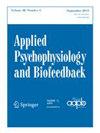Assessing the Feasibility of EMG Biofeedback to Reduce the Upper Trapezius Muscle Excitation during a Seated Row Exercise, a Non-randomized Comparative Study
Abstract
The upper trapezius muscle is often excessively excited during resistance training exercises, increasing the shoulder’s liability to musculoskeletal disorders of individuals participating in overhead sports or throwing activities. Different approaches have been proposed for reducing the potentially harmful loading of the upper trapezius. None, however, has been devised to deal directly with the main culprit: the muscle excitation. This non-randomized comparative study explores the feasibility of biofeedback based on surface electromyograms (EMGs) in suppressing undue excitation of the upper trapezius during a seated row exercise. Eight male volunteers were instructed to perform the wide-grip seated row exercise without and with the EMG biofeedback of the upper trapezius. Surface EMGs from the three portions of the trapezius and the serratus anterior were sampled with pairs of surface electrodes. A triaxial accelerometer was positioned on the weight stack for the identification of the exercise phase and repetition. This study showed that during the “with biofeedback” condition, the participants were able to activate the upper trapezius and serratus anterior to a lower degree (~ 10%) compared to the “without biofeedback” condition. Future studies should explore if this can lead to greater gains in muscle performance and/or reduce the risk of shoulder injury.



 求助内容:
求助内容: 应助结果提醒方式:
应助结果提醒方式:


